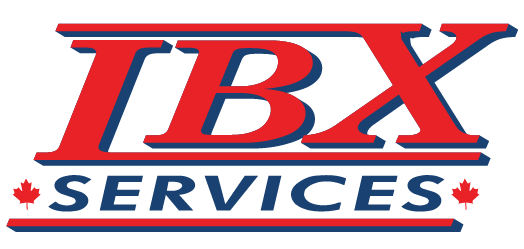When winter temperatures are at their coldest, the last thing you want to deal with is water damage or roof damage—or both. Yet the wintery mix of cold and freezing temperatures and powerful storms means that frozen pipes as well as flooding, or even a compromised roof, are very real possibilities. We speak from experience because the most frequent calls we receive in the winter are usually about these three types of disasters.
That’s why this week, we wanted to highlight a few things that are helpful to know if your business is hit by a frozen pipe, flooding, or roof damage this winter.
Frozen Pipes
In areas that drop below freezing, it’s always important to stay vigilant about preventing frozen pipes during the winter—but especially if a building is new, recently remodelled, or vacant.
Frozen pipes can usually be prevented by closely inspecting all areas of your building where temperatures could drop below freezing and then taking preventative measures, such as adding pipe insulation, sealing openings, or adding a heat source.
In any building large or small, there’s always a chance you will overlook something and end up with a frozen pipe that could burst. If there is a particular area that worries you, be sure to check the pipes for signs of freezing when the temperatures are at their coldest by trying to run water or looking for signs, such as frost on a pipe, expansion, or even cracks.
If you do locate a frozen pipe, these steps can reduce the likelihood of it bursting:
Turn off the water to the building at the main water shutoff valve
Inspect the pipe closely for cracks and note any that you find
If you find cracks, call a plumber for advice before doing anything else
If there is no damage present, add a space heater to the area or use a hairdryer to gradually warm the pipe. If the outside temperature is expected to rise, you can also wait for the pipe to thaw on its own before turning the water back on.
PROCEED WITH CAUTION: Never use any type of open flame or torch to thaw pipes.
If a pipe has already burst, then you’re dealing with different headaches, which leads well into our next topic.
Flooding and Water Damage
During the winter, water damage can come in all kinds of forms, ranging from a burst pipe to water incursion from rain or melting snow, or even overflowing rivers or lakes.
If you are dealing with manageable amounts of clean (Category 1) water, you may be able to handle the cleanup and recovery yourself. (If you are dealing with Category 2 or Category 3 water, the cleanup job may be best left to professionals.) If you do choose to handle the cleanup, you must identify all of the areas that have been impacted and establish proper airflow to promote drying. You can read more about the process in this post.
For the most part, damage to your building, furniture, and fixtures can be easily addressed.
What’s harder to address—if you don’t act quickly—is damage to paper-based assets, such as contracts, books, records, or anything else that is important to your business. Once paper-based materials are wet, they start to deteriorate rapidly, but they can be saved and salvaged through the freeze-drying process. So don’t waste any time calling a restoration provider, if you need help with damaged documents. Moreover, if you think that document restoration is something your business might ever need, consider establishing a relationship with a vendor ahead of time so you can ensure the fastest possible response.
Roof Damage
Depending on the structure of your building and the type of roof, damage can come in many forms during the winter, whether it’s overloaded with snow or damaged by a strong wind gust, for example.
Since roof types and damage can include so many variables and safety considerations, we’ll just offer this piece of advice: respond as promptly as is safely possible to secure the damage. For example, if a part of your roof is torn off by a wind storm during a dry period, it may be important that you take preventative measures to protect the damaged area from water incursion from rain or snow. Otherwise, your insurance may only cover the wind damage, and you could be left footing the bill for other types of damage. That’s why understanding your insurance policy is critical.
Stay Warm and Dry this Winter
We hope your winter is safe, fun and mishap-free. If you do experience any of these types of damage, you must respond quickly, calmly and methodically. It is also important to make sure you have the right experts in place to assist you as needed.

